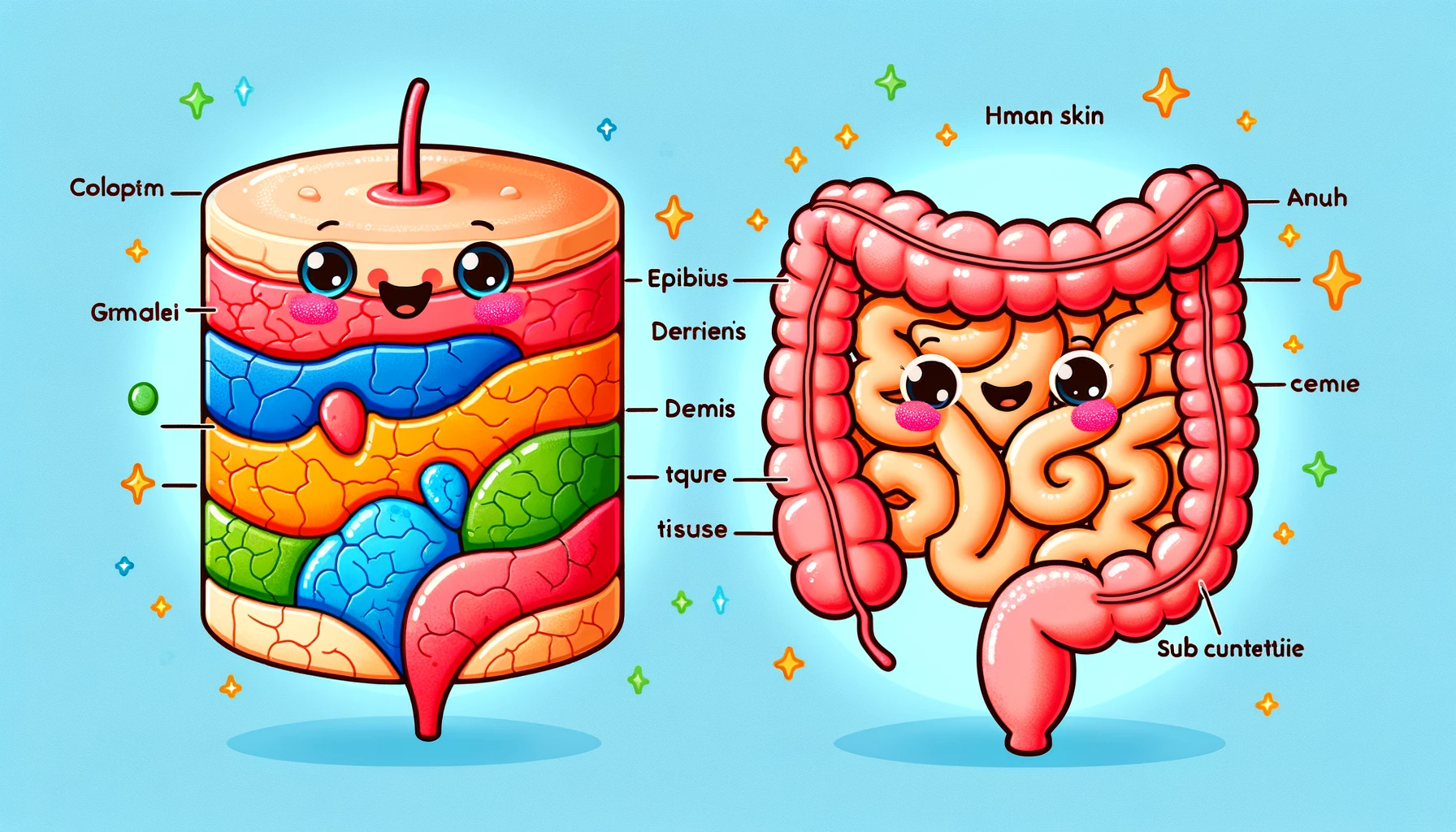Skin vs. Intestines: Understanding Their Differences and Functions
Skin vs. Intestines: Understanding Their Differences and Functions
Table of Contents
- Introduction to Skin and Intestines
- Structure of the Skin
- Structure of the Intestines
- Functions of the Skin
- Functions of the Intestines
- Skin vs. Intestines: Key Differences
- Common Skin Disorders
- Common Intestinal Disorders
- Importance of Skin and Intestinal Health
- Conclusion
- References
Skin vs. Intestines: Understanding Their Differences and Functions
Introduction to Skin and Intestines The skin and intestines are vital organs that play crucial roles in maintaining overall health. While the skin protects the body from external harm, the intestines are essential for digestion and nutrient absorption. This article explores the differences and functions of the skin and intestines, highlighting their importance in the body’s daily operations.
Structure of the Skin The skin is the largest organ of the body, consisting of three main layers:
- Epidermis: The outermost layer that provides a waterproof barrier and creates skin tone.
- Dermis: The middle layer containing connective tissue, hair follicles, and sweat glands.
- Hypodermis (Subcutaneous Layer): The deepest layer composed of fat and connective tissue that insulates the body and cushions internal organs.
Structure of the Intestines The intestines are part of the digestive system, comprising two main sections:
- Small Intestine: A long, coiled tube where most digestion and nutrient absorption occur. It consists of three parts: the duodenum, jejunum, and ileum.
- Large Intestine: Also known as the colon, it absorbs water and electrolytes, forming and expelling feces. It includes the cecum, colon, rectum, and anus.
Functions of the Skin The skin performs several essential functions:
- Protection: Acts as a barrier against pathogens, harmful substances, and UV radiation.
- Regulation: Helps regulate body temperature through sweat production and blood vessel dilation or constriction.
- Sensation: Contains nerve endings that detect touch, temperature, pain, and pressure.
- Vitamin D Synthesis: Produces vitamin D when exposed to sunlight, essential for bone health.
Functions of the Intestines The intestines play a crucial role in digestion and overall health:
- Digestion: The small intestine breaks down food using enzymes and bile, allowing nutrient absorption.
- Nutrient Absorption: The walls of the small intestine absorb nutrients, which enter the bloodstream and are transported to cells throughout the body.
- Water Absorption: The large intestine absorbs water and electrolytes from indigestible food matter.
- Waste Formation and Excretion: The large intestine forms and stores feces, which are expelled through the rectum and anus.
Skin vs. Intestines: Key Differences
- Primary Function: The skin provides protection and sensation, while the intestines are responsible for digestion and nutrient absorption.
- Structure: The skin is a multi-layered organ with a protective barrier, whereas the intestines are hollow tubes with specialized sections for digestion and absorption.
- Location: The skin covers the entire body, while the intestines are located within the abdominal cavity.
- Processes: The skin engages in processes like sweating and vitamin D synthesis, while the intestines perform enzymatic digestion and water reabsorption.
Common Skin Disorders Several disorders can affect the skin, leading to various symptoms and health issues:
- Acne: Inflammation of hair follicles and sebaceous glands, causing pimples and cysts.
- Eczema: A condition causing itchy, inflamed skin.
- Psoriasis: An autoimmune disease resulting in red, scaly patches on the skin.
- Skin Cancer: Abnormal growth of skin cells, often due to excessive sun exposure.
Common Intestinal Disorders Several disorders can affect the intestines, leading to various symptoms and health issues:
- Irritable Bowel Syndrome (IBS): A chronic condition causing abdominal pain, bloating, and changes in bowel habits.
- Inflammatory Bowel Disease (IBD): Includes Crohn’s disease and ulcerative colitis, causing chronic inflammation of the intestines.
- Celiac Disease: An autoimmune disorder where ingestion of gluten damages the small intestine lining.
- Diverticulitis: Inflammation or infection of small pouches (diverticula) that can form in the walls of the large intestine.
Importance of Skin and Intestinal Health Maintaining the health of both the skin and intestines is essential for overall well-being:
- Healthy Diet: Consuming a balanced diet rich in vitamins, minerals, and fiber supports both skin and intestinal health.
- Hydration: Drinking plenty of water helps keep the skin hydrated and aids in digestion and nutrient absorption.
- Regular Exercise: Physical activity promotes circulation, benefits skin health, and supports healthy digestion.
- Avoiding Harmful Substances: Limiting exposure to harmful chemicals, smoking, and excessive sun exposure protects the skin, while avoiding processed foods and maintaining a healthy diet supports intestinal health.
- Regular Check-ups: Routine medical check-ups can help detect and manage potential skin and intestinal issues early.
Conclusion Understanding the differences and functions of the skin and intestines is crucial for maintaining overall health. By recognizing the unique roles these organs play in protection and digestion, and by adopting healthy lifestyle habits, individuals can support the optimal functioning of their skin and intestines.
<ⓒ WizardMedics (wizardmedics.com)>



